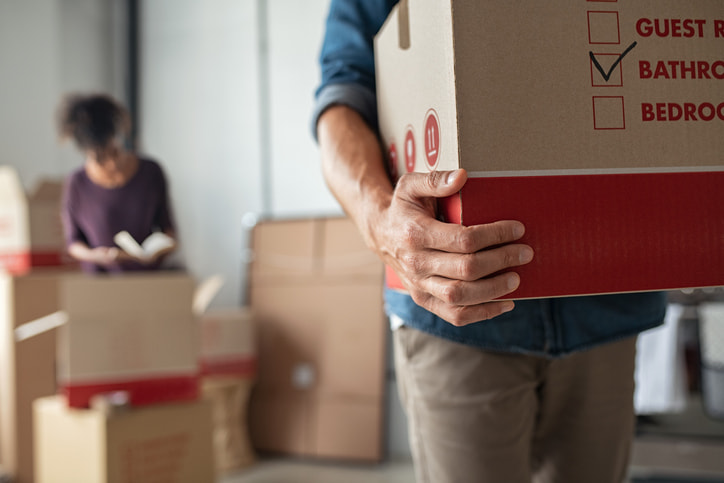
If you’re planning on moving next year, the countdown is on. There’s a lot to do and a lot of time, but that doesn’t mean you need to leave things to the last minute.
Getting your ducks in a row as early as possible can make life easier (and potentially cheaper) when you officially get the ball rolling.
Keep reading for our top tips on how to prepare for your 2026 move up to a year in advance, with everything you need to do as early as possible.
1. Get a Property Valuation
First up, it’s important to get your affairs in order. Learning how much your home is worth right now can help you plan ahead.
While the figures may change next year, getting a rough idea – particularly from an online valuation – can help you decide how much you need to save.
Speaking to an independent mortgage advisor can also help if you need a mortgage when you next move. Knowing your affordability can influence all kinds of life decisions this year, from where you go on holiday to your online shopping habits.
2. Complete Home Renovations
If you have a renovation budget, now is the time to start making changes. Consider speaking with a local estate agent to uncover what your target market really wants in a property your size, or if there are specific ways you can increase value.
Remember, some renovations are more worth it than others. Spending a lot may help your home sell faster, but it won’t always see a high return. Plus, you won’t get to enjoy the changes for long, which could make it even less worthwhile.
3. Touch-Up Living Spaces
Renovation may not be worth it, but there’s no harm in fixing up the little things. Repairing knocks on the walls and replacing anything that’s broken freshens things up, which can make your home more appealing to future buyers.
Try not to spend too much money if you’re renovating on a budget, especially if an estate agent doesn’t think it’s worth the investment. Instead, focus on any noticeable problems.
For example, make sure cupboard doors are on straight and door handles are tightened. Scrub or repaint scuff marks on the wall and repair any dents or plaster cracks, as these can look worrying to buyers during viewings.
4. Start Decluttering
Even if you’re planning to upscale, transporting things you don’t need costs money and takes valuable time. The sooner you start decluttering, the easier (and cheaper) things will be when you eventually move.
Plus, the less cluttered your home is, the easier it is to take listing photos and host viewings. Focus on things like going through your paperwork, sorting wardrobes, and getting rid of anything you no longer need.
While you don’t have to throw everything out, moving offers the chance to start afresh. Use this time to take stock of your belongings and consider what you truly want to take with you to your new home.
5. Collect Packing Materials
If you have the storage space, consider collecting boxes and any protective packaging you get from deliveries. While you can buy these items in the lead-up to a move, the costs can quickly add up – especially if you have a lot of stuff.
Moving supplies can cost around £150-£300, sometimes more if you have fragile items and a lot of knick-knacks. Keeping boxes and unused bubble wrap avoids these charges, leaving you with more cash in your pocket to spend on your new home.
Conclusion
Preparing for a move a year in advance shouldn’t take over your life. But making early preparations can minimise stress later down the line.
In particular, it’s good to know how much your home is worth right now. That way, you can start planning the nicer things, like the area you want to move to and the type of property you want to buy.
Check your property’s potential today with our expert online valuation tool and gain unique insights on how much your home is worth. Or book an estate agent valuation now with one of our local experts for a more in-depth review.